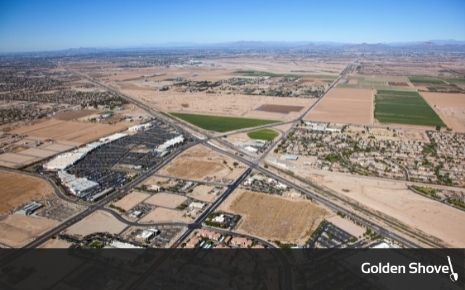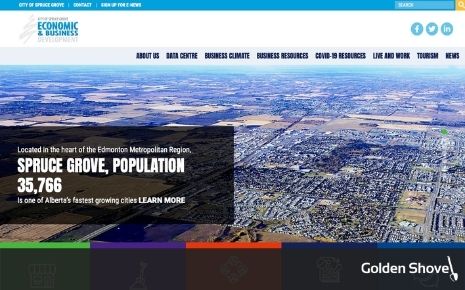Building a Remote Workforce

14 Apr 2021
News, Marketing, Workforce
Attract Remote Workers to Your Community
Building a remote workforce is key in an age where more and more employees are choosing to work remotely. 2020 changed the perception of remote work for many employers and employees, bringing with it a rise in worker satisfaction, increased productivity, and better mental health for many. The benefits of the environment and housing market are other indicators that remote work is here to stay. As the trend of remote work continues to rise, you may be wondering how to include remote workers in your workforce attraction strategy.
The Remote Work Trend Will Continue to Grow
Remote work has grown 400% in the last decade. 57% of employers are now offering a remote work option. By 2025, an estimated 70% of the workforce will be working remotely to some extent. 9% of adults ages 18-29 are on the move due to COVID, and 22% of adults overall are moving as a result of the virus. Many people are moving to find more space to work from home and others want to get away from congested areas to limit the spread of COVID. Remote work is growing and people are moving. Communities that attract the remote workforce are set to prosper.
Remote Workers Benefit the Local Community
Why would my community want to attract a remote workforce? The benefits speak for themselves. The positives that come hand in hand with growing a remote workforce include:
- A larger tax base
- More support for small businesses
- More stable jobs
- A diversified labor pool
- Improved neighborhoods
- A prosperous community
- Stronger parks and recreational facilities
Remote workers are a true community asset, and they are avidly searching for the right place to call home. The majority of the remote workforce is made up of Millennials who bring spending power with them. A large portion of their income is spent on eating out, and about half of Millennials are willing to pay more money to support small businesses than Gen Xers and Baby Boomers. Benefits like these add up to happier small business owners and a prosperous local economy.
Opportunities for Improvement
Success stories are everywhere, but being the top choice for remote workers takes planning. Attracting a target audience starts with an aesthetically pleasing and carefully curated website.
There are always opportunities for improvement and these 10 reasons why your economic development website isn't attracting remote workers provide an example of some common shortcomings for many economic development websites. Failing to include remote workers as a target audience is the most obvious shortcoming, but lacking SEO, an underwhelming layout and a poor interface are other common issues. Identifying these issues and making adjustments to amend them will lead to a more attractive website and community as a whole.
How To Attract a Remote Workforce
The benefits of a remote workforce are clear. Opportunities for improvement have been identified. All that remains is to hone in on what community assets attract remote workers and to develop a step-by-step process that outlines how to include remote workers in your workforce attraction strategy. There are a few key ways to make this happen.
Incentives, Incentives, Incentives!
Focus on what's important to remote workers. Highlighting local and statewide remote worker incentives like relocation reimbursement, student loan debt assistance, tax breaks, and housing assistance is a must. Like any employee, remote workers go where the money is. Towns and cities will quickly reap back what they invest in attracting remote workers.
All the Amenities
Amenities like excellent bandwidth places to grab a coffee and meal to-go, outdoor spaces for exercising and local community events provide remote workers with the comfort and support they need to succeed. Click here and here for two examples of counties that highlight their amenities with gusto.
Remote workers spend the majority of their time at home, so developing networking activities and coworking spaces that allow for interaction while maintaining social distancing gives remote workers options and boosts mental health. Advertise these opportunities.
Internet access is another resource that can make or break a move for a remote worker. 67% of respondents to a recent survey by SatelliteInternet.com said that internet availability in a rural area would affect their decision to move, and 36% said limited access is preventing them from moving to rural destinations. Fast, affordable, and dependable internet access goes a long way in the journey to attracting remote workers.
These 7 brilliant ways to grow your remote workforce delves deeper into what remote workers need to thrive. Learn how to capture the attention of the remote workforce through being familiar with what makes a remote worker content.
Recruit Professional Help With Your Remote Workforce Attraction Strategy
We've identified how to attract remote workers to your community and what's most important to them, but recruiting help from an expert source makes executing a remote workforce attraction strategy simpler and more effective.
As a recap: this is what you need to start doing now to attract remote workers.
What's Next?
Delve deeper and recruit help.
Our resources on the topic are great places to start as you begin your journey to a more prosperous economy and successful remote worker home base. These resources provide a detailed, step-by-step process to growing your remote workforce quickly and successfully.
Recruit Us
We've already helped many towns and cities experience success in the journey to attract a remote workforce. You can join them. Contact us to begin building your successful remote workforce attraction strategy today.
Download "Rethinking Workforce Attraction in the Age of Remote Work"
More Topics






